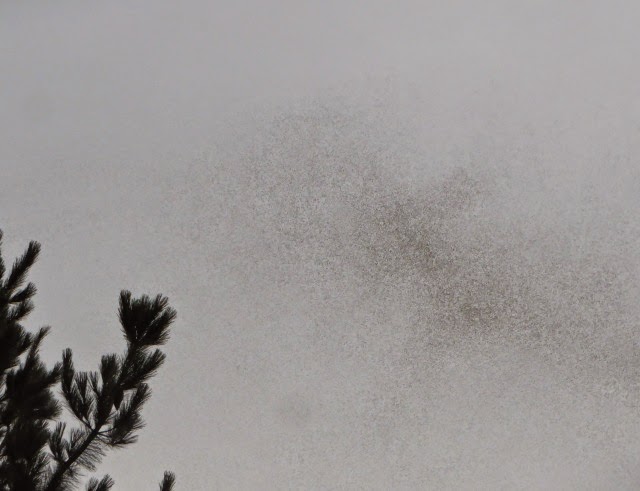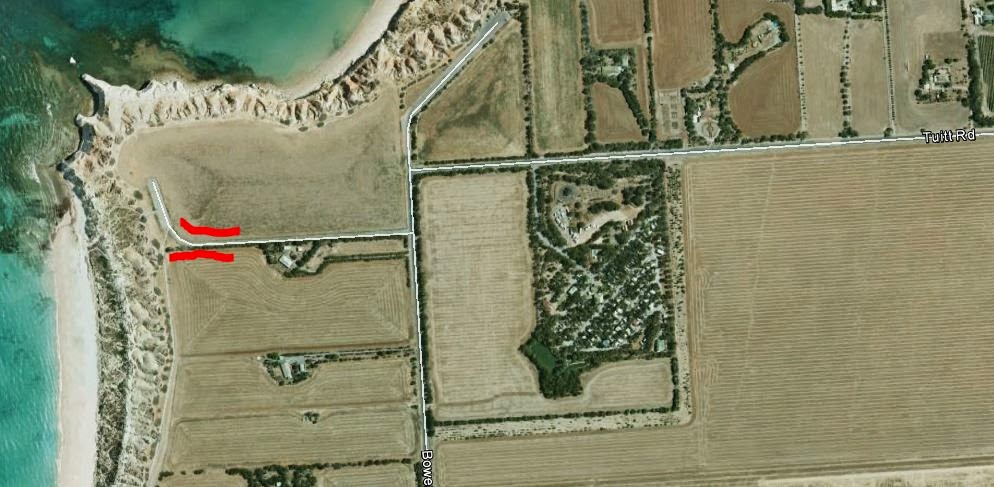Bird-A-Day Update(s)
As well as the formal Bird-a-Day competition/game/challenge/whatever I started a personal effort on July 1 last year. That was done with slight malice aforethought knowing that we were heading off on a 6 week trip to Atherton on July 2. Largely as a result of that trip I made it through the rest of 2016 and into 2017.
As a commentary on the difficulty of doing BaD from Carwoola it is interesting to compare my house-block list from Carwoola with that of another birder from the Atherton area. My home list (after 10 years) is 109 species. The Atherton list (after a few more years, but ...) is 200.
I did run a top-up version of the formal effort adding new birds as I saw them, but missing out days between. This got me up to 245 birds (dropping out of competition on 23 June with 175 species). The January effort is covered here and other than some brief mentions for comparative purposes won't be further covered in this.
So, as from January 1 2017 I was running two database tables: my personal one for the second half of 2016 and the formal one for 2017. I ran out of luck today for the former so here is the situation for both efforts.
As a commentary on the difficulty of doing BaD from Carwoola it is interesting to compare my house-block list from Carwoola with that of another birder from the Atherton area. My home list (after 10 years) is 109 species. The Atherton list (after a few more years, but ...) is 200.
I did run a top-up version of the formal effort adding new birds as I saw them, but missing out days between. This got me up to 245 birds (dropping out of competition on 23 June with 175 species). The January effort is covered here and other than some brief mentions for comparative purposes won't be further covered in this.
So, as from January 1 2017 I was running two database tables: my personal one for the second half of 2016 and the formal one for 2017. I ran out of luck today for the former so here is the situation for both efforts.
2016 July-Start
The geographic extent of my birding was not too bad for someone who didn't get out of the country, and only got on a plane once, during the year.
The extremes were North - Daintree; East - Sydney; South - Mallacoota; and West - Adelaide. Most of my birding however,was around the site marked "Home". According to the checklists on eBird, during the second half of 2016 I compiled 161 (43%) of my 377 checklists within about 50kms from home. By State:
The extremes were North - Daintree; East - Sydney; South - Mallacoota; and West - Adelaide. Most of my birding however,was around the site marked "Home". According to the checklists on eBird, during the second half of 2016 I compiled 161 (43%) of my 377 checklists within about 50kms from home. By State:
| ACT | 41 |
| NSW close | 121 |
| NSW other | 12 |
| QLD | 122 |
| SA | 4 |
| VIC | 77 |
I will confess surprise at how few sheets were from "NSW other". Then I refocussed on the time period, realising most of our trips away have been to Victoria.
Overall I managed 196 species for the July start. Allowing for the 28 days we stayed in Atherton this suggests that had we stayed home (or at least only taken short trips) I would probably have done slightly less well than in the Jan effort.
Disregarding claptrap such as "all birds are equally good" the best bird was the Tawny Grassbird seen at Jerrabomberra Wetlands on 11 Jnauary 2017! Only my second sighting ever and a new bird for the area. My best flock is still the 700+ Brolgas near Mazeppa NP QLD in July.
As usual I scored each bird according to a somewhat subjective BaD rarity rating for the location and season, and a rather more objective index derived (by methods for which I can't remember the detail) from eBird. The lack of detail doesn't matter: this analysis isn't going to crash the Dow Jones, start a war, stop climate change or cause the Trumpeter to become rational. The first chart compares these two measures for this period.
This is more or less the normal pattern as I am "forced" to use the common yard birds at the end.
Comparing my performance in the first and second halves of the year (OK, the latter includes a few days from 2017) is interesting. Beginning with the BaD rarity score (bigger is better):
I think what it means is that when I am at home, in the first few days (as in the Jan 2016 case) I am able to chase unusual birds for the area but when travelling I don't know the territory well enough to twitch, but all the birds are eligible for ticking. I used field guides to assess the BaD ratings while in Queensland.
Moving to the Index scores.
The start for the January exercise was given a major boost with Paradise Shelduck (Index score 0, as it was an Australian first - found by someone else) but once things settled down the two series were pretty similar until the final stages. The last few birds for the January start were all very common birds in the area whereas for the July start there were some very 'good' birds found right up to the end and the very high scoring species were spaced out.
2017 effort (early)
The start of 2017 has been a good one with the Tawny Grassbird also featuring as BaD code 7 and several of the unusual birds from the the Hoskinstown Plain marsh keeping BaD scores up and the Index down. The most frustrating day so far included:
- Whiskered Tern (code 6) - selected
- Spotted Harrier (code 5)
- Brown Songlark (code 5)
- Baillons Crake (code 6)
Here is a chart comparing the first 16 days of the last three efforts.
This shows that the current essay is very similar to last years January effort and somewhat better than thé first few days of July 2016.
This shows that the current essay is very similar to last years January effort and somewhat better than thé first few days of July 2016.








Comments